Belaying Mastery: A Comprehensive Guide
Blogs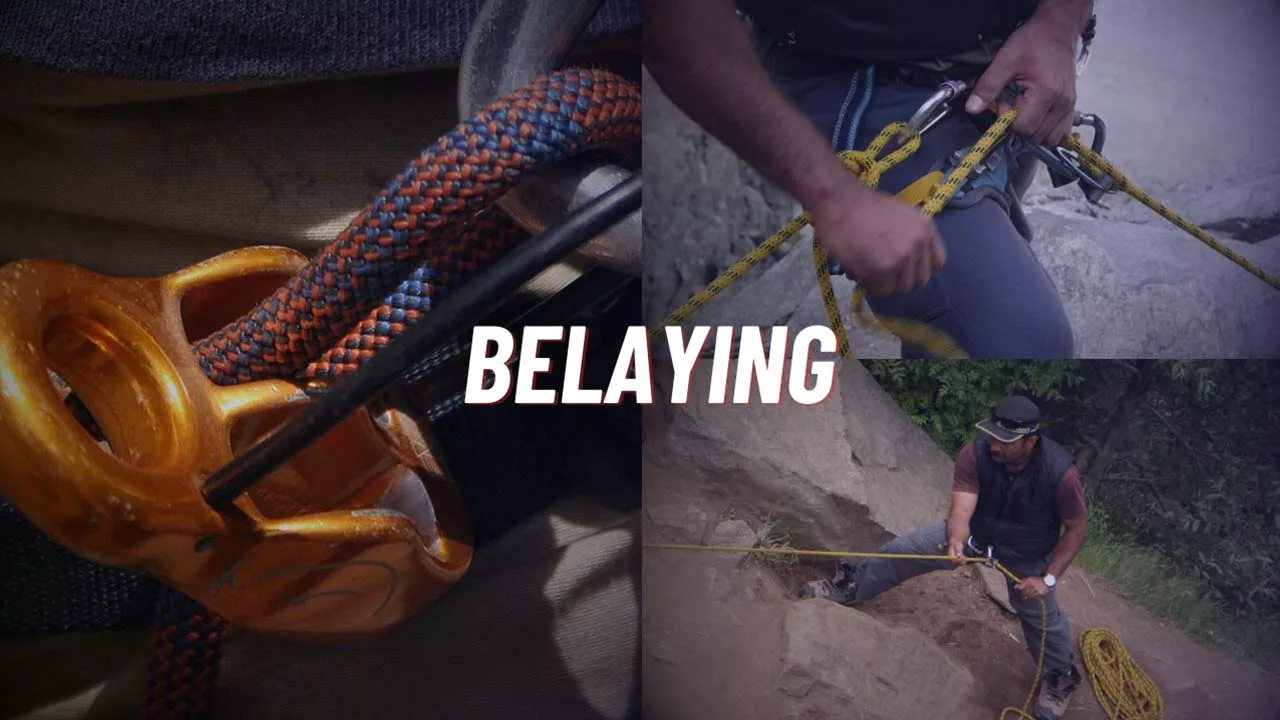
I. Introduction
In mountaineering and rock climbing, belaying is the lifeline.
A. Belay Definition:
The safety provided by a stationary climber to a moving climber with the help of a rope, and a belaying device is called belaying.
- This definition emphasizes the crucial role of the stationary climber (the belayer) in ensuring the safety of the moving climber (the climber ascending). It highlights that belaying involves the use of both a rope and a belaying device.
Method of Securing a Rope to Protect a Climber from Falling:
Belaying is described as the method of securing a rope to protect a climber from falling.
- This highlights the primary function of belaying to prevent falls and minimize the risk of injury to the climber. The belayer manages the rope’s tension and uses belaying devices to control the rope’s movement.
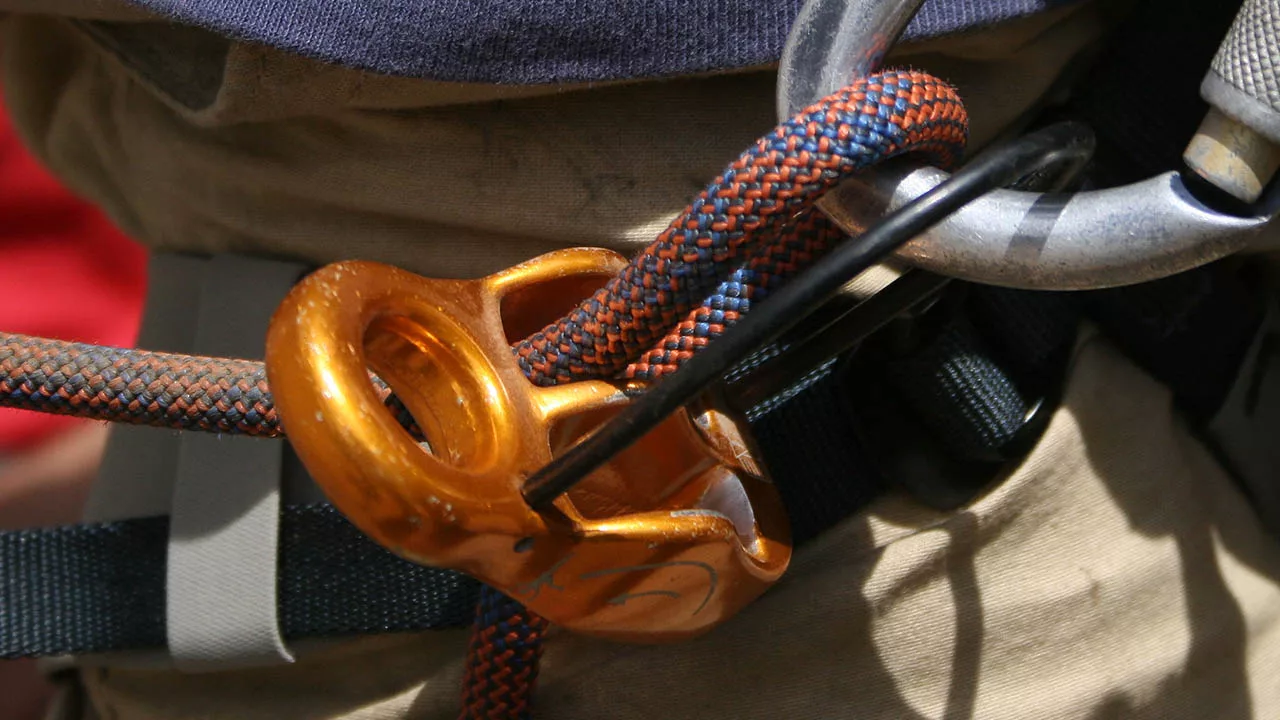
Vital Concept in the Climbing Lexicon:
Belaying is acknowledged as a vital concept in the climbing lexicon.
- This emphasizes the importance of belaying in climbing culture and practice. It underscores that understanding and mastering belaying techniques are fundamental skills for climbers of all levels.
Overall, this definition encapsulates the essence of belaying as a safety measure that enables climbers to navigate vertical terrain with reduced risk.
B. Belaying Process Technique
Belaying isn’t just a technique; it’s the backbone of climbing safety. Without a vigilant belayer, a climber’s ascent could become perilous. Belaying acts as the safety net, preventing falls and allowing climbers to push their limits with confidence.
The correct belaying technique is crucial for ensuring the safety of both the climber and the belayer.
Always Keep Brake Hand on the Rope:
This means that the hand responsible for controlling the rope’s tension should never leave the rope unless necessary. It ensures that you are ready to apply friction and arrest the climber’s fall at any moment.
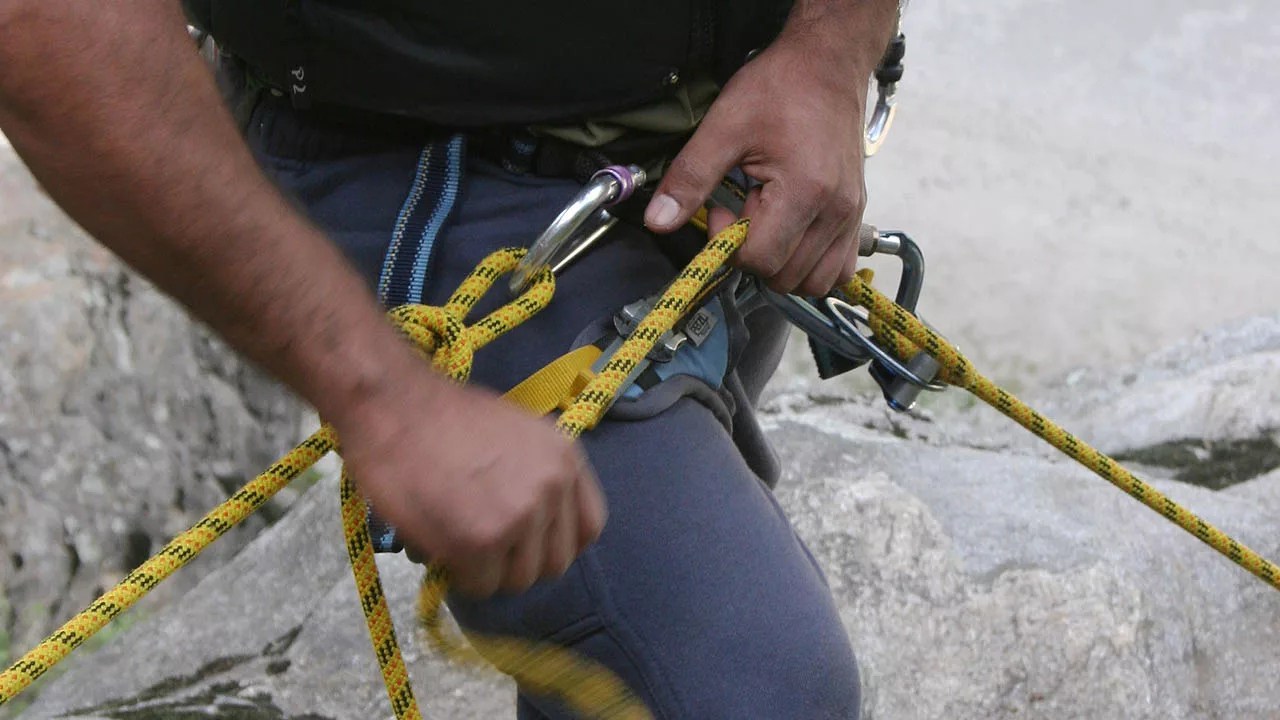
Glide Hand Only When Rope is Securely Grasped:
If you need to adjust your hand position on the rope, ensure that the rope is securely held in the braking position before moving your hand. This prevents accidental slippage or loss of control over the rope.
Orient Brake Hands in the Strongest Natural Position:
Your brake hand(s) should be positioned in a way that feels most comfortable and secure for you. This might vary depending on whether you’re using a tube-style device like an ATC or an assisted braking device like a GriGri. The goal is to maintain a firm grip without causing strain or discomfort.
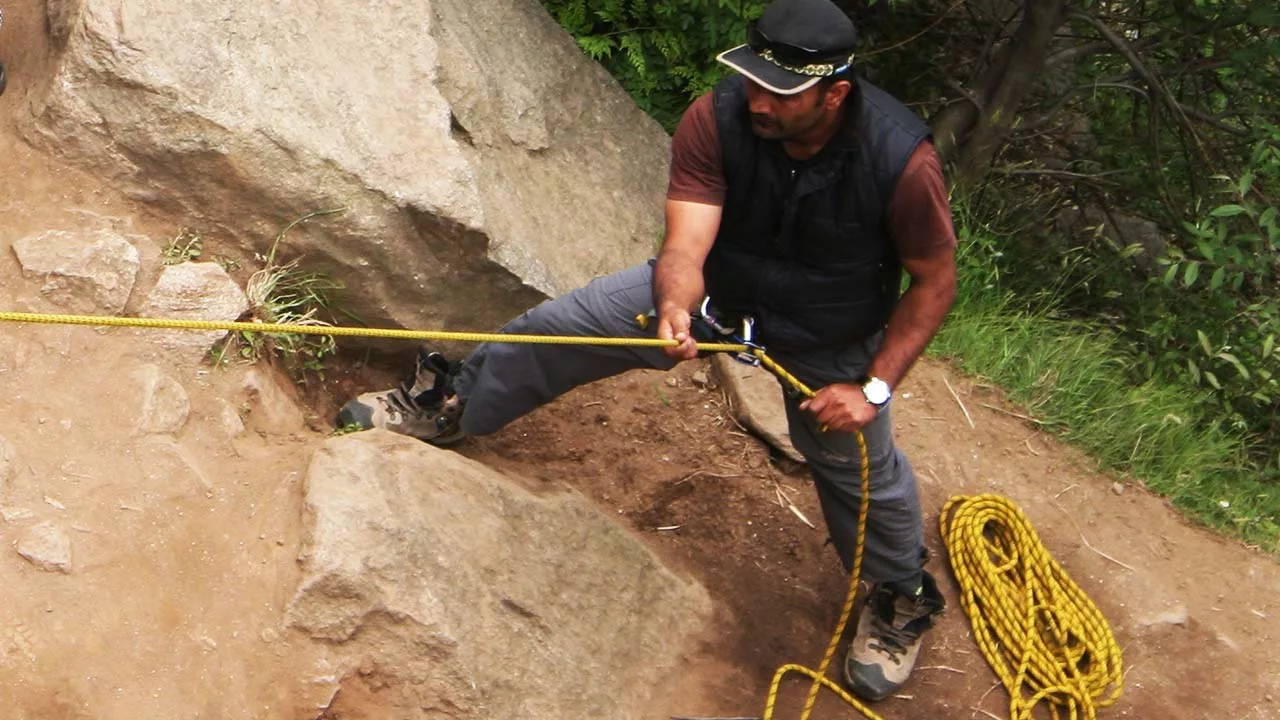
Keep Eyes on Climber and Surroundings:
Continuous visual contact with the climber is essential for anticipating their movements and reacting quickly to any potential issues. Additionally, staying aware of your surroundings helps you identify and mitigate any hazards or risks in the climbing area.
By following these belaying techniques diligently, belayers can contribute significantly to a safe and enjoyable climbing experience for everyone involved.
C. Imagine belaying as a dance between climber and belayer. It’s a synchronized effort where the belayer manages the rope’s tension, providing support and guidance while the climber ascends. It’s a dynamic process that demands communication, trust, and precision timing.
II. Understanding Belay Devices

A. Belay devices are the tools that transform raw rope into a lifeline. They come in various forms, from the classic ATC to the high-tech GriGri, each offering unique features and functionalities tailored to different climbing styles and preferences.
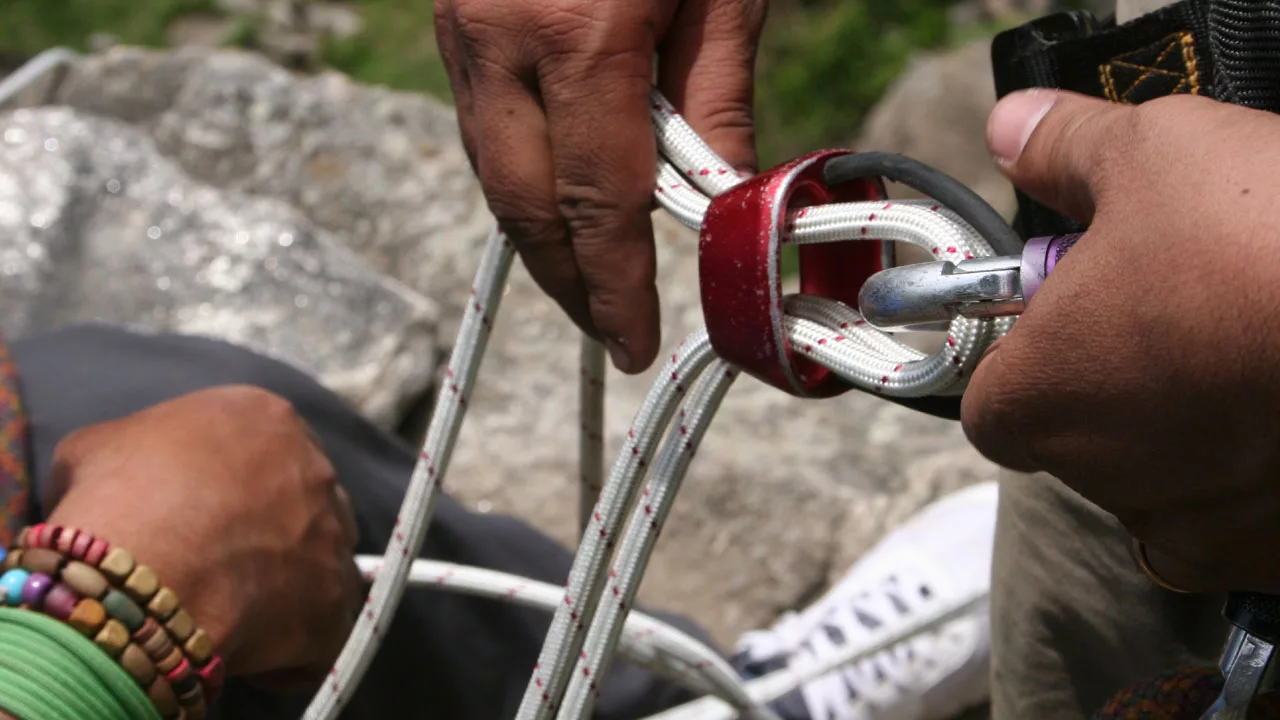
B. Like any gear, belay devices have their pros and cons. While some provide smooth handling and reliable braking, others may require more skill to operate or lack versatility in certain situations. Understanding these nuances helps climbers make informed decisions.
C. Choosing the right belay device is akin to selecting the perfect partner for a climb. It depends on factors like climbing discipline, terrain, and personal preferences. Whether it’s a traditional belay plate for multi-pitch adventures or an auto-locking device for sport climbing, finding the right fit ensures a seamless and safe climbing experience.
III. Safety Considerations
A. Safety Check Before Belay
Before belaying, checking equipment and anchors is akin to inspecting the safety harness before climbing. It’s about ensuring every component is secure, every knot is tied correctly, and every anchor is bombproof. Rigorous inspections before each climb instill confidence and peace of mind, ensuring that climbers and belayers can focus on the adventure ahead.
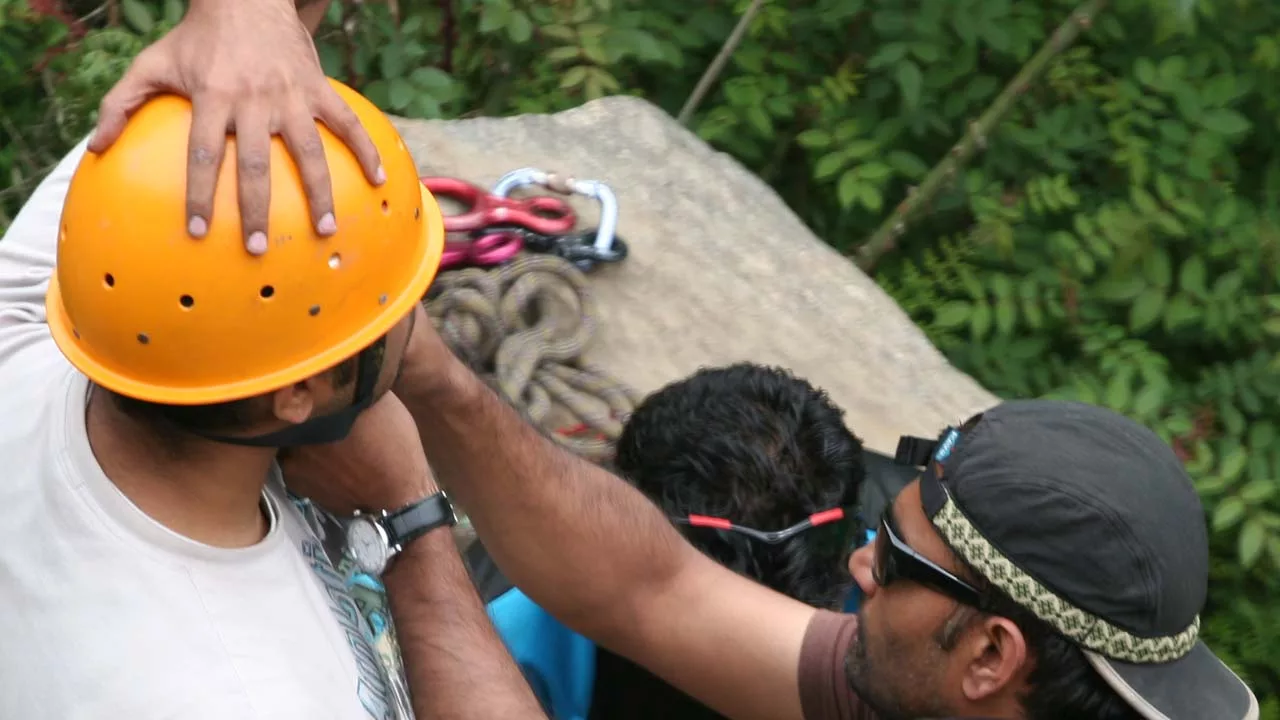
B. Communication and Belay Commands
Proper communication between climber and belayer is the lifeline of climbing safety. Clear verbal cues, hand signals, and mutual understanding are essential for effective coordination and trust. It’s the language of safety that ensures seamless transitions, timely catches, and swift responses to unexpected challenges.
Climbers and belayers use verbal instructions known as belay commands to communicate effectively. They standardize these commands to convey specific actions and intentions clearly between the climber and the belayer.

Common belay commands and their meanings:
- “On belay?”: This command is typically initiated by the climber and is a request to the belayer to confirm that they are ready to belay. The belayer responds with “Belay on” to indicate readiness.
- “Climbing!”: This command is used by the climber to indicate that they are about to start climbing. It alerts the belayer to prepare to take in slack and provide support as needed.
- “Slack!”: The climber uses this command to request slack in the rope, allowing them to make upward progress without feeling too constrained by the tension.
- “Take!”: The climber issues this command to request that the belayer take in the slack and remove any excess rope, usually to create a tighter belay.
- “Falling!”: When the climber senses that they are about to fall or lose their grip, they announce “Falling!” to alert the belayer to prepare to arrest the fall.
- “Watch me!”: This command is used by the climber to request that the belayer pay close attention and be prepared to respond quickly to any potential falls or difficulties.
- “Off belay!”: Once the climber has reached a safe position or completed the climb, they inform the belayer by saying “Off belay.” This indicates that the belayer is no longer needed to provide active support.
- “Belay off!”: The belayer acknowledges the climber’s completion of the climb and indicates that they can remove the belay system.
Understanding and practicing these commands help climbers and belayers work together smoothly and efficiently during climbs.
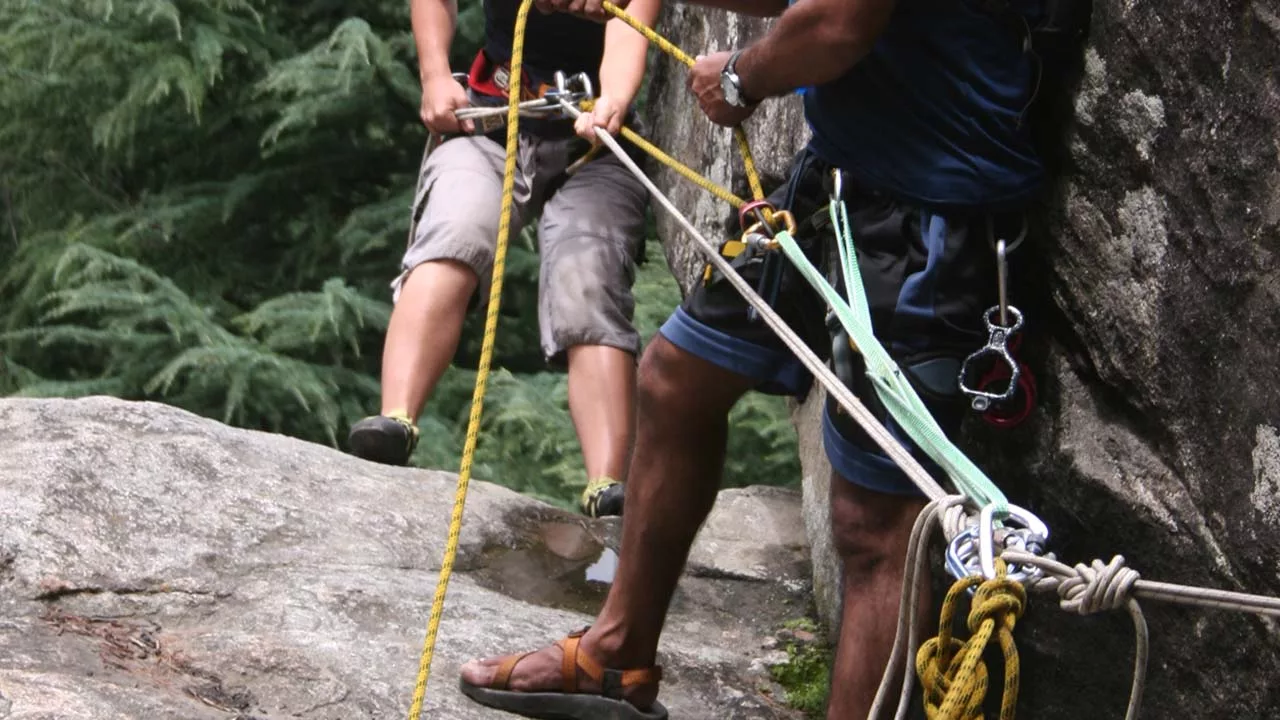
B. Common belaying mistakes can turn a thrilling climb into a dangerous ordeal. From improper rope management to distractions, awareness is key to avoiding accidents. Staying focused, double-checking setups, and continuous training help mitigate risks and ensure a safe climbing experience for everyone involved.
IV. Belay Techniques
A brief differentiation between top-rope belaying, lead belaying, and multi-pitch belaying:
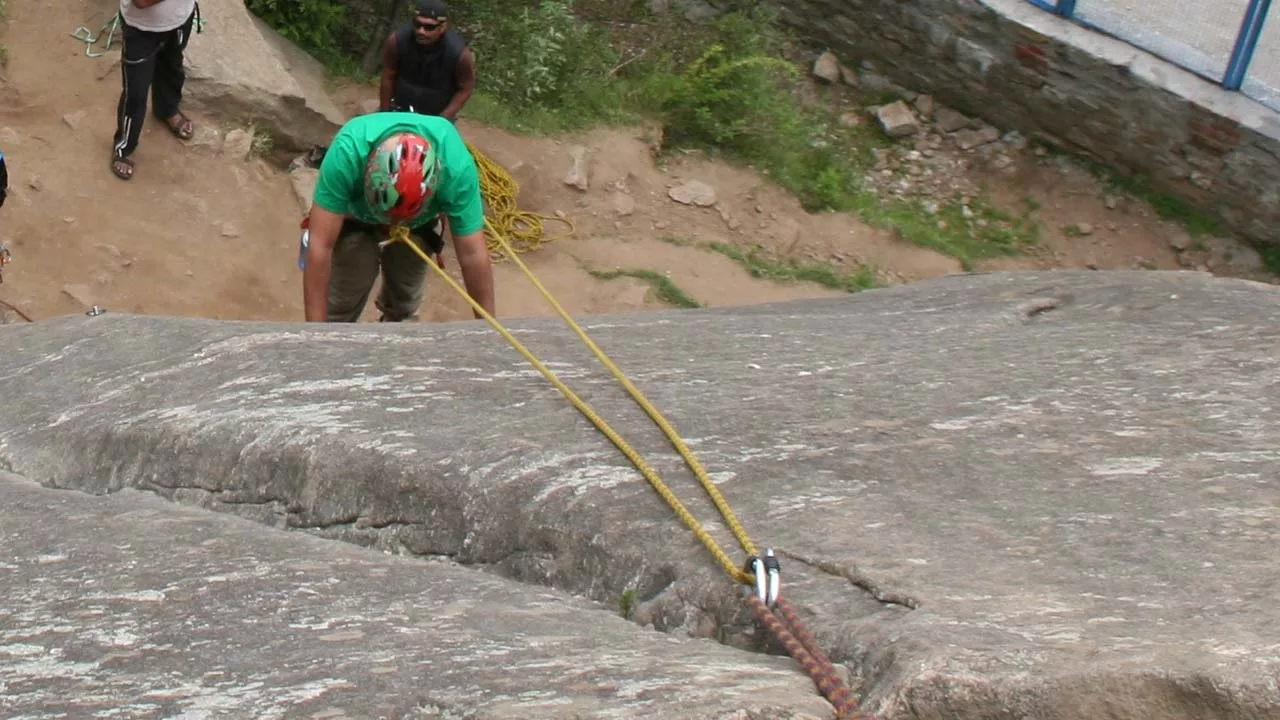
1. Top-rope Belaying:
- In top-rope belaying, the rope runs from the climber, up through an anchor at the top of the climb, and then down to the belayer.
- The belayer is typically stationed at the bottom of the climb and manages the rope as the climber ascends, providing tension and controlling slack to ensure the climber’s safety.
- Top-rope belaying is often used in beginner climbing scenarios and provides a high level of safety as the climber is protected from ground falls.
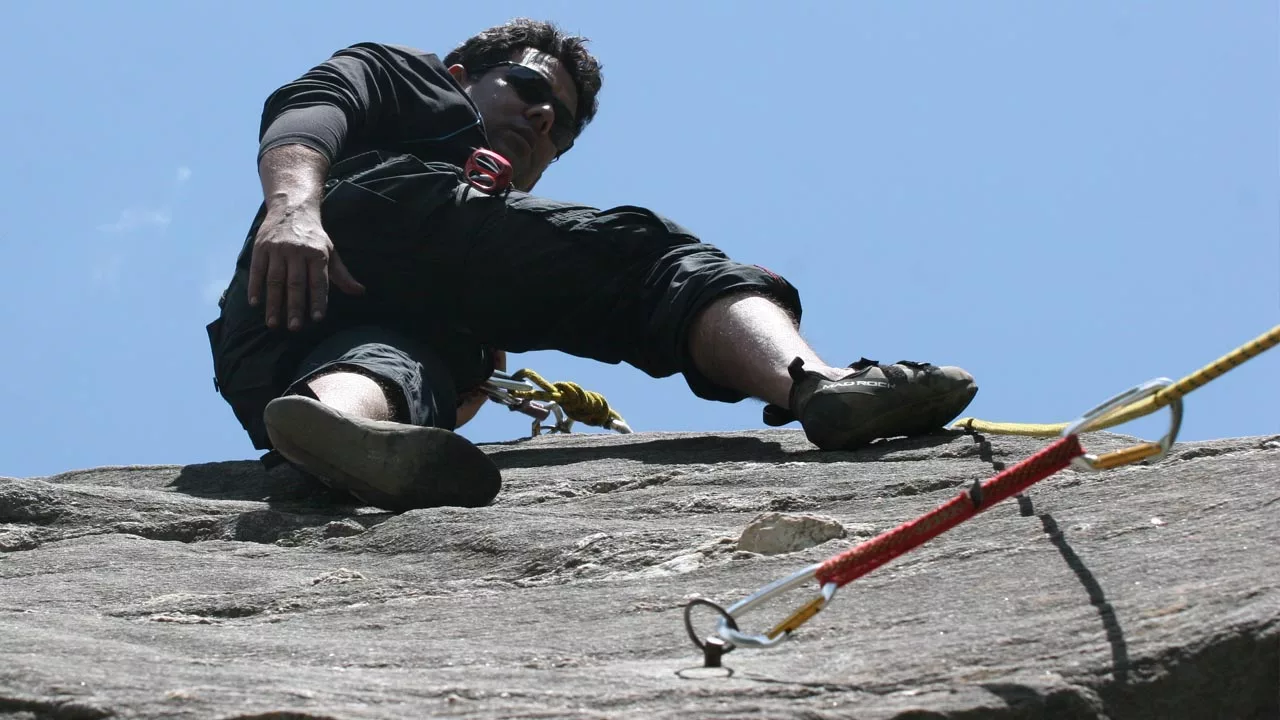
2. Lead Belaying:
- Lead belaying involves a more dynamic relationship between the climber and the belayer.
- In lead climbing, the climber ascends the route while clipping the rope into protection (such as bolts or traditional gear) along the way.
- The lead belayer pays out rope as the climber progresses, taking in slack and providing a catch in case of a fall.
- Lead belaying demands more attention and skill from both the climber and the belayer, as it involves managing potential falls from above the protection points.
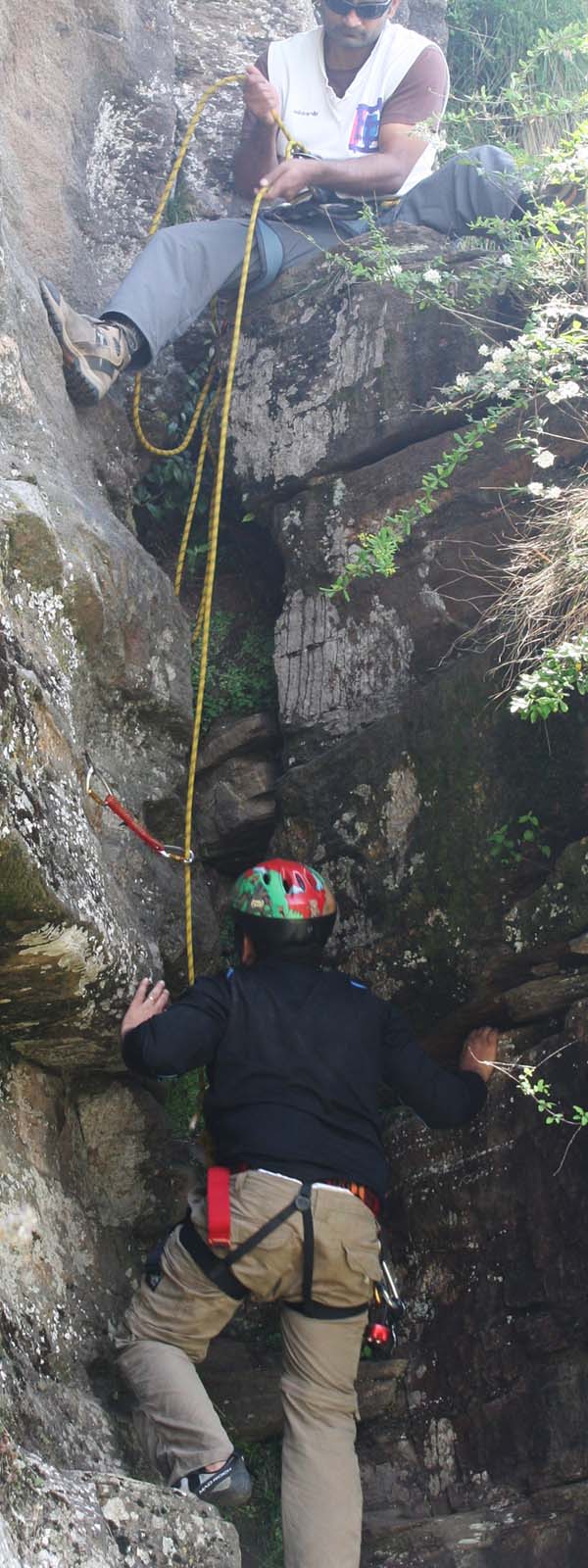
3. Multi-pitch Belaying:
- Multi-pitch belaying occurs in scenarios where a climb is longer than a single rope length, requiring climbers to ascend multiple sections or “pitches.”
- The belaying process involves climbers alternating between lead and belay roles as they progress up the route.
- Each pitch ends at a belay station, where the lead climber establishes an anchor and belays the second climber up.
- Multi-pitch belaying requires efficient communication, rope management, and anchor-building skills to ensure safe transitions between pitches and belay stations.
In summary, while all three types of belaying involve managing the rope to protect the climber, they differ in terms of the climbing scenario, the level of complexity, and the roles and responsibilities of both the climber and the belayer.
V. Advanced Belaying Skills
A. Belay Escapes
Belay escapes refer to the techniques used by climbers to quickly and effectively release a loaded belay device in emergencies. Imagine a scenario where a climber falls unexpectedly, and the belayer needs to respond swiftly to prevent injury or further danger. In such moments, belay escapes become crucial as they enable the belayer to regain control over the rope and the climber’s descent.

These maneuvers require finesse and quick thinking because they must be executed rapidly and accurately. Whether it’s releasing a stuck rope, managing sudden increases in tension, or adjusting to unexpected movements, mastering belay escapes demands both technical skill and mental agility.
Ultimately, the ability to perform belay escapes can transform a potentially disastrous situation into a controlled one, allowing climbers and belayers to react effectively to unforeseen challenges and ensure the safety of everyone involved in the climb. It’s a skill that every climber should strive to develop and incorporate into their climbing toolkit.
B. Assisted braking devices like the GriGri are the modern marvels of climbing safety. Understanding and using these devices require more than just technical knowledge; it’s about developing a feel for their unique mechanics and capabilities. From proper hand positioning to understanding rope compatibility, mastering assisted braking devices enhances safety and confidence on the wall.

C. Belaying in different scenarios tests a climber’s adaptability and resourcefulness. Whether it’s belaying a second climber on a multi-pitch route or managing ropes from above on a top-rope setup, each scenario demands a nuanced approach. It’s about understanding the dynamics of the climb, anticipating challenges, and communicating effectively to ensure a seamless ascent.
VI. Tips for Improving Belay Skills
A. Practice drills are the building blocks of belaying proficiency. From rope management exercises to simulated falls, regular drills improve muscle memory and reaction times, enhancing efficiency and safety on the wall.
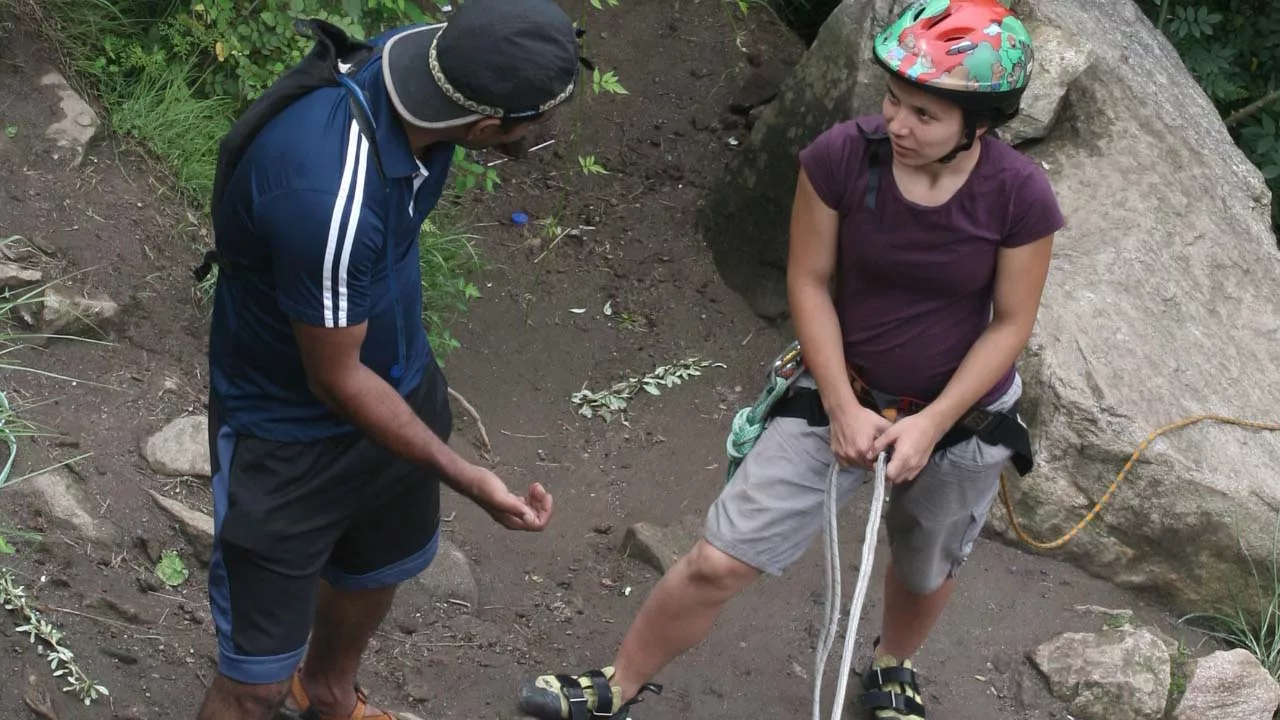
B. Seeking guidance from experienced climbers and instructors is like tapping into a treasure trove of wisdom. Learning from those who’ve mastered the craft not only accelerates skill development but also instills valuable insights and best practices.
C. Regular safety checks and refreshers are the backbone of responsible climbing. It’s about staying vigilant, keeping equipment in top condition, and staying updated on the latest safety protocols. By prioritizing safety and continuous learning, climbers foster a culture of responsibility and support within the climbing community.
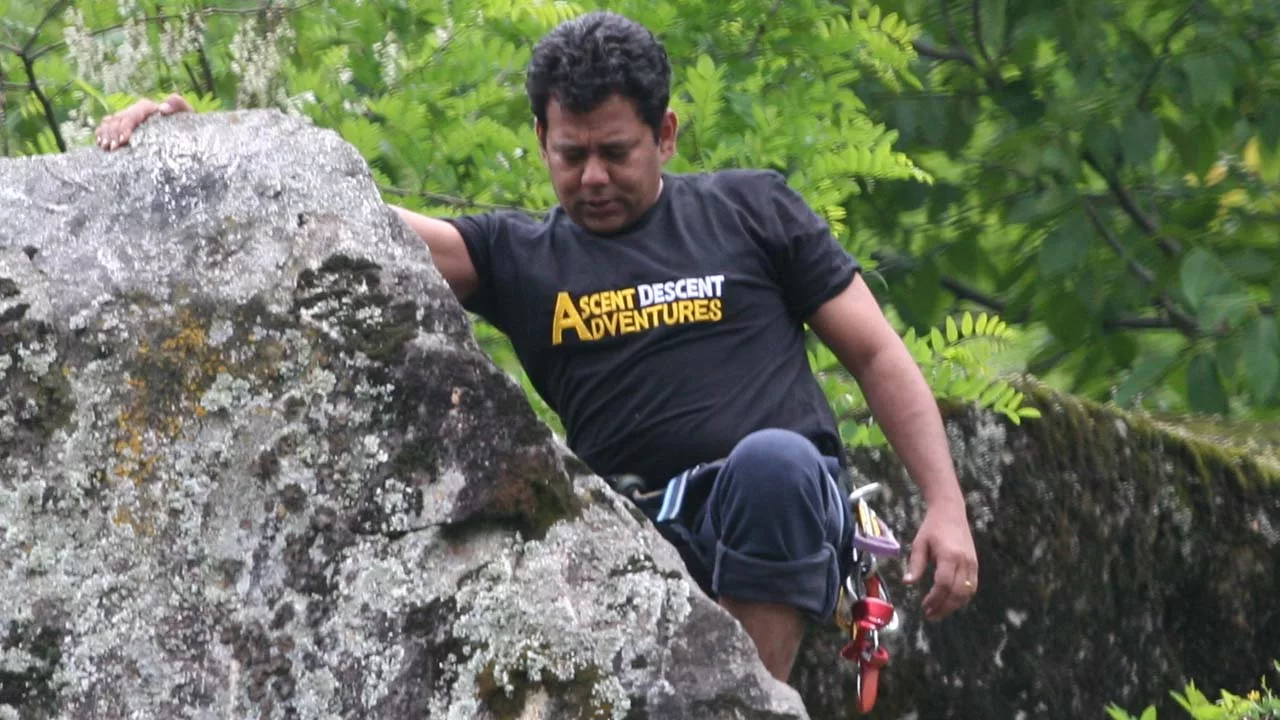
VII. Conclusion
A. Belaying is the heartbeat of climbing safety, the invisible force that keeps climbers tethered to their dreams. Its importance cannot be overstated, serving as the ultimate guardian against the unknown.
B. Continuous improvement is the essence of climbing. As climbers, we embark on a journey of growth, always striving to refine our skills and deepen our understanding of the sport.
C. In the end, responsible climbing isn’t just about conquering peaks; it’s about preserving the sanctity of the natural world and nurturing the bonds of community. By embracing safety, humility, and respect, we ensure that the spirit of climbing endures for generations to come.